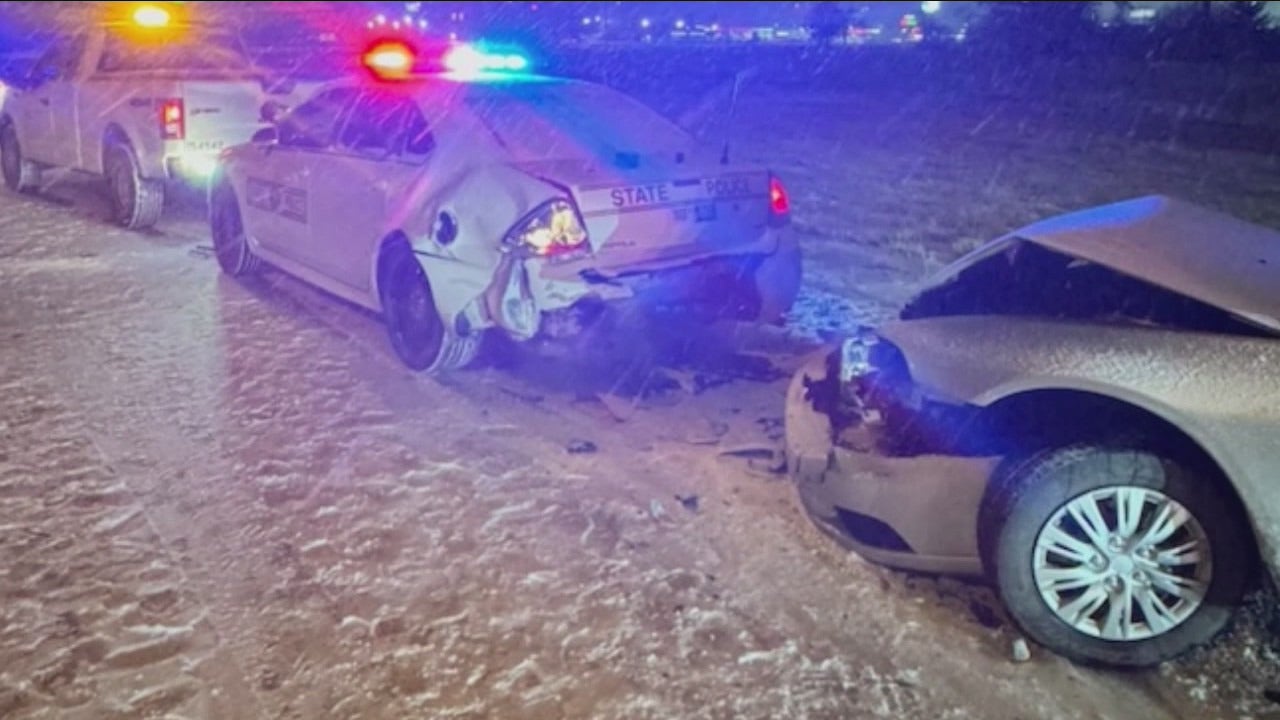
Zeta Global Holdings Corp. Class Action: Levi & Korsinsky Reminds Zeta Global Holdings Corp. Investors of the Pending Class Action Lawsuit with a Lead Plaintiff Deadline of January 21, 2025 – ZETA AccessWire
source

After more than four years of litigation, a closely watched copyright case over the Internet Archive’s scanning and lending of library books is finally over after Internet Archive officials decided against exercising their last option, an appeal to the Supreme Court. The deadline to file an appeal was December 3.
With a consent judgment already entered to settle claims in the case, the official end of the litigation now triggers an undisclosed monetary payment to the plaintiff publishers, which, according to the Association of American Publishers, will “substantially” cover the publishers’ attorney fees and costs in the litigation.
“While we are deeply disappointed with the Second Circuit’s opinion in Hachette v. Internet Archive, the Internet Archive has decided not to pursue Supreme Court review,” reads a December 4 statement posted on the Internet Archive’s blog. “We will continue to honor the Association of American Publishers (AAP) agreement to remove books from lending at their member publishers’ requests.” The post added that the IA would continue work with supporters “to advocate for a future where libraries can purchase, own, lend, and preserve digital books.”
The end of the case comes after a three-judge panel of the Second Circuit Court in September delivered a swift and unequivocal decision that unanimously affirmed judge John G. Koeltl’s March 24, 2023, summary judgment ruling, which found the Internet Archive's program to scan and lend print library books to be copyright infringement.
“This appeal presents the following question: Is it ‘fair use’ for a nonprofit organization to scan copyright-protected print books in their entirety, and distribute those digital copies online, in full, for free, subject to a one-to-one owned-to-loaned ratio between its print copies and the digital copies it makes available at any given time, all without authorization from the copyright-holding publishers or authors? Applying the relevant provisions of the Copyright Act as well as binding Supreme Court and Second Circuit precedent, we conclude the answer is no,” the 64-page decision reads.
The infringement lawsuit was first filed on June 1, 2020, in the Southern District of New York by Hachette, HarperCollins, Penguin Random House, and Wiley, and organized by the AAP. The suit specifically involved 127 works from the plaintiff publishers—a sample of the more than 33,000 plaintiff publishers' works said to be included in the Internet Archive's library—with initial court filings suggesting that the lA's collection included more than a total of 3.6 million works potentially under copyright.
Publisher and author groups had long been troubled by the IA's program and the concept of controlled digital lending. But a lawsuit did not appear imminent until March 2020, when the Internet Archive rattled publishers and authors by unilaterally launching its now shuttered National Emergency Library initiative, which temporarily removed restrictions on the IA's collection in response to the pandemic closures of schools and libraries.
In a statement, AAP reps celebrated what they characterized as a complete legal victory.
“After five years of litigation, we are thrilled to see this important case rest with the decisive opinion of the Second Circuit, which leaves no room for arguments that ‘controlled digital lending’ is anything more than infringement, whether performed by commercial or noncommercial actors, or aimed at authorship that is creative or factual in nature,” said AAP president and CEO Maria Pallante, in a statement. “As the Court recognized, the public interest—and the progress of art and science that is the mandate of the Constitution’s copyright clause—is served best when authors and their publisher licensees can decide the terms on which they make their works available.”
Meanwhile, the Internet Archive’s legal battles are not quite over. The IA is facing a similar, follow-on suit filed by a group of major record labels over its “Great 78” program, which collects vintage 20th century 78 RPM recordings, digitizes them, and makes them freely available to the public.
An archive of PW's coverage of the case is here.
Loading…
Password
Log In Forgot Password
New to PW? To set up immediate access, click here.
NOTE: If you had a previous PW subscription, click here to reactivate your immediate access. PW site license members have access to PW’s subscriber-only website content. If working at an office location and you are not “logged in”, simply close and relaunch your preferred browser. For off-site access, click here. To find out more about PW’s site license subscription options, please email Mike Popalardo at: mike@nextstepsmarketing.com.
If you have questions, contact:
Email: PublishersWeekly@omeda.com
Call:1-800 -278-2991 (outside US/Canada, call +1-847-513-6135) 8:00 am – 4:30 pm, Monday-Friday (Central)

Caleb Love had a big night as Arizona beat Samford on Wednesday at McKale Center.
Caleb Love scored 23 points, Arizona led 56-33 at halftime and maintained a double-digit lead throughout the second half to defeat Samford 96-64 on Wednesday night at McKale Center. Arizona improves to 5-5 overall with its final non-conference game on Saturday versus Central Michigan.
Arizona took its first double-digit lead 30-19 with 8:10 left in the first half and it never fell below 11 points the remainder of the game. The Wildcats extended a 16-15 lead to 39-21 with a 23-6 run and were in command the remainder of the game. Arizona committed only four turnovers in the first half against a Samford team adept at forcing them.
Arizona shot 61.3 percent in the first half. Love led the way with 18 points in the first half on 5-7 from the floor, 2-4 on three-point attempts and 6-8 from the free throw line. Trey Townsend scored 14 points and had eight rebounds and Anthony Dell'Orso also scored 14.
The win is a solid one for Arizona. Samford is just outside quadrant two as the 80th-ranked team in the NCAA Netratings. Home games in quad two are versus teams from 31st through 75th in the netratings. Samford could move up in the rankings to turn the game into a quad-two win for Arizona.
Goodnight from McKale pic.twitter.com/aGIQrUyRzw
Samford was led by Jaden Brownell with 13 points. Julian Brown and Trey Fort were the only other Samford players in double-figures with 11 points. Samford shot 36.7 percent from the floor and made 12 out of their 35 three-point attempts. Arizona outrebounded Samford 42-23, had a 48-20 edge in points in the paint and 37-12 in fast break points.
Arizona held the lead for 38:30 and the game was tied for 1:13. The Wildcats continued to struggle from three, making only seven of its 22 attempts. Tommy Lloyd started Tobe Awake, Jaden Bradley, Dell'Orso Love and Townsend together for the first time this season.
© 2024 Minute Media – All Rights Reserved. The content on this site is for entertainment and educational purposes only. Betting and gambling content is intended for individuals 21+ and is based on individual commentators' opinions and not that of Minute Media or its affiliates and related brands. All picks and predictions are suggestions only and not a guarantee of success or profit. If you or someone you know has a gambling problem, crisis counseling and referral services can be accessed by calling 1-800-GAMBLER.

By s.e. smith
Every few days, I open my inbox to an email from someone asking after an old article of mine that they can’t find. They’re graduate students, activists, teachers setting up their syllabus, researchers, fellow journalists, or simply people with a frequently revisited bookmark, not understanding why a link suddenly goes nowhere. They’re people who searched the internet and found references, but not the article itself, and are trying to track an idea down to its source. They’re readers trying to understand the throughlines of society and culture, ranging from peak feminist blogging of the 2010s to shifts in cultural attitudes about disability, but coming up empty.
This is not a problem unique to me: a recent Pew Research Center study on digital decay found that 38 percent of webpages accessible in 2013 are not accessible today. This happens because pages are taken down, URLs are changed, and entire websites vanish, as in the case of dozens of scientific journals and all the critical research they contained. This is especially acute for news: researchers at Northwestern University estimate we will lose one-third of local news sites by 2025, and the digital-first properties that have risen and fallen are nearly impossible to count. The internet has become a series of lacunas, spaces where content used to be. Sometimes it is me searching for that content, spending an hour reverse engineering something in the Wayback Machine because I want to cite it, or read the whole article, not just a quote in another publication, an echo of an echo. It’s reached the point where I upload PDFs of my clips to my personal website in addition to linking to them to ensure they’ll remain accessible (until I stop paying my hosting fees, at least), thinking bitterly of the volume of work I’ve lost to shuttered websites, restructured links, hacks that were never repaired, servers disrupted, sometimes accompanied by false promises that an archive would be restored and maintained.
Who am I, if not my content?
When you describe yourself as a “writer” but your writing has become hard to find, it creates a crisis not just of profession, but identity. Who am I, if not my content? It is hard not to feel the disappearance of creative work as a different kind of death of the author, one in which readers can’t interpret my work because they can’t find it. It is a sort of fading away, of losing shape and relevance.
We live in a content era, the creator economy, in which everyone and their grandparent has turned into a “content creator.” We are watching the internet slip away as websites and apps rise and fall, swallowed by private equity, shuttered by burnout, or simply frozen in time — taking with it our memories, our cultural phenomena, our memes. In theory, as we like to tell Zoomers who are putting it all out there, “the internet is forever.” Employers and enemies can and will ferret out your worst moments on the internet, and even things that were, in theory, deleted can be resurfaced on mirrored sites and archives, with screenshots of half-forgotten forums. And yet, in reality, things can disappear as though they never were, sometimes quite suddenly. The same accessibility and low barriers to entry, that same easy come — I can set up a website in the time it takes me to finish this sentence — can also morph into an easy go. A social media account can be locked or banned for a real or perceived terms of service violation in the blink of an eye, a venerable feminist publication can abruptly vanish, a news startup can wink out of existence just as quickly as it rose to prominence, and news organizations can nuke decades of music journalism or TV archives at the flick of a switch. Restructured links and a fundamentally broken search infrastructure can shift an article out of view to all but the most determined. I wonder, for example, how long my National Magazine Award-winning column at Catapult will remain accessible online, living as it does at the whims of its owner, an eccentric billionaire.
The loss of content is not a new phenomenon. It’s endemic to human societies, marked as we are by an ephemerality that can be hard to contextualize from a distance. For every Shakespeare, hundreds of other playwrights lived, wrote, and died, and we remember neither their names nor their words. (There is also, of course, a Marlowe, for the girlies who know.) For every Dickens, uncountable penny dreadfuls on cheap newsprint didn’t withstand the test of decades. For every iconic cuneiform tablet bemoaning poor customer service, countless more have been destroyed over the millennia.
This story is featured in Content Goblins, a limited-run print magazine about “content” and the people who “make” it. Get your copy of this gorgeous / deranged publication by signing up for an annual subscription to The Verge, while supplies last.
This is a particularly complex problem for digital storage. For every painstakingly archived digital item, there are also hard drives corrupted, content wiped, media formats that are effectively unreadable and unusable, as I discovered recently when I went on a hunt for a reel-to-reel machine to recover some audio from the 1960s. Every digital media format, from the Bernoulli Box to the racks of servers slowly boiling the planet, is ultimately doomed to obsolescence as it’s supplanted by the next innovation, with even the Library of Congress struggling to preserve digital archives.
Historical content can be an incredibly informative resource, telling us how people lived and thought. But we must remember that it’s a small fraction of contemporaneous material that survives, even as we hope, of course, that it’s our own existence that is ultimately memorialized. Sometimes it is through the gaps that we read history or are forced to consider why some things are more likely to persist than others, are more remembered than others, why other histories are subject to active suppression, as we’re seeing across the United States with legislation targeting the accurate teaching of history.
So why does the present situation feel so severe? The shortest and most obvious answer is that things feel more real when we are living through them and they affect us directly; what we understand intellectually about history hits different when we’re living it, especially for the “Extremely Online” among us who are constantly saturated in a steady supply of mourning over the death of the internet and “you might be a millennial if [you recognize a floppy disc / landline phone / LAN party]” memes.
The longer answer speaks to the arc of historical trends that are fundamentally reshaping humanity, with the boom in artificial intelligence standing out as a particularly brutal contributor to our present state. While many have been enjoying a little AI, as a treat, dabbling in ChatGPT to help draft an angry letter to the utility company, or goofing around with increasingly unhinged Midjourney prompts, we are unwittingly contributing to the engine of our own despair.
There’s a phenomenon that happens where I live along the rugged coastline of Northern California, when conditions are right, or more accurately, wrong: a layer of green, foamy scum clings to the surface of the ocean so that when the waves wash your footprints away, they are replaced by a layer of vile, reeking slime dotted by writhing marine organisms. This is, at times, how the internet feels right now. We are being slowly erased, but instead of passing peacefully into the vale with the ebb and flow of soothing waves, we are being actively replaced by garbage.
How comfortable are we with the disappearance of entire swaths of careers and artistic pursuits?
Garbage created by an industry broadly referring to itself as “artificial intelligence” — a term so overused that it is starting to lose all meaning — devouring and then regurgitating our content, a froth of green, smelly foulness that rests on the sands where people once walked. I am starting to disassociate every time I get a new notification about terms of service in which I learn that my content will be used to train yet another large language model designed to replace me, as corporations attempt to replace creativity and joy with a mountain of trash. I attempt to negotiate for protective clauses in contracts and am rejected, lie awake at night wondering how much of my work has already been folded into systems generating billions in profits for their makers on the backs of our labor, sigh every time I log in to LinkedIn and all the writing jobs are actually advertisements for training the latest AI hotness.
The comparison with our green tides runs deeper than that, as AI is literally burning up the world in the name of profits, driving the climate change that causes toxic algae blooms. Much like the British tossing papyrus and mummies into the hungry maws of steam engines, we are destroying history and culture to fuel the empire, and the empire is profit. The result is internet poisoning, a landscape saturated in misinformation and AI garbage — at best comical, at worst, lethal. For future generations interested in knowing more about the world we live in, it has the potential to make it nearly impossible to untangle fact from fiction, art from fakery. There is something deeply offensive in knowing not only that hundreds of thousands of my words have vanished, but that some LLM is probably crawling through the tattered fragments to churn out mockeries of the very real sources, research, and energy that once backed those words. They’ll be vomited back on the shores of my browser, squirming and stinking.
There is also a strange and bitter loss of autonomy in watching humans slowly disappear beyond a veil of AI murk and inherently unstable digital storage, a dark twist at a moment when so many of us are fighting for our right to exist in our own bodies. We have come to accept, without reading, the terms of service that assign the rights of our content to the platforms we post on, and when those platforms abruptly close or delete our content or lock us out of our accounts, we mourn the loss as we receive a firsthand lesson in what it means to sign our digital rights away. When I choose to delete my tweets, take my self-hosted blog off the internet, or set up a finsta, I’m in control of my data destiny, but the loss of control when archives are maintained by the winners serves to make me feel small, forgotten, easily disposed of.
The notion that everything that ever has been and ever will be on the internet will always be there — potentially to haunt us — feels less true in an era when data is constantly disappearing. The internet is not, in fact, forever; sometimes the zombie of a bad take will linger, sure, but just as probably, we’ll vanish, as I recently discovered when I realized that one of my Twitter accounts, active from 2009–2023, had been wiped because I hadn’t logged in recently. An untold number of bon mots, educational threads, exchanges with fellow users, photographs, and of course, misinformed, shitty opinions I’d rather forget, simply gone, into the ether. It felt, perhaps irrationally, like being erased, like that person had never been.
I think sometimes of the Voyager Golden Records, spinning endlessly into eternity, a cry into the void that features a selection of carefully curated human experiences in an attempt to communicate the vastness of Earth’s history and culture to other beings. The offerings, selected by a committee led by Carl Sagan, include a photograph of a woman in a grocery store, the sound of footsteps, a sampling from The Magic Flute, an image of an astronaut in space, a human heartbeat. The process of picking and choosing what to include must have been agonizing and fraught, limited not just by storage considerations, but politics, pressure, and cultural hegemony. The result is a highly fragmented, erratic, selective view of what it means to be human, more a testimony of our limitations than of our potential, a reminder that archival work is not neutral, and a powerful case for diversifying the way we preserve information.
We can’t hope to capture every single fragment of the internet, from the first lagging days of DARPA to the videos attached to each TikTok sound, to preserve the fire hose of content we are all wallowing in. But we can have a conversation about which things we value and believe should be kept, which things should be allowed to disappear into the waves, and who among us stands to be remembered, echoing, like Sagan’s laughter, into the future. How comfortable are we with the disappearance of entire swaths of careers and artistic pursuits? And who is making these decisions — private equity or journalists, AI or archivists, billionaires or workers? The answers to these questions, and the way we define ourselves today, will shape our culture of the future.
/ Sign up for Verge Deals to get deals on products we’ve tested sent to your inbox weekly.
The Verge is a vox media network
© 2024 Vox Media, LLC. All Rights Reserved

Share
Drivers in Illinois will now receive even more real-time warnings when Illinois State Police are responding to crashes or other roadside emergencies.
CHICAGO – Drivers in Illinois will now receive real-time warnings when state police respond to crashes or other roadside emergencies, urging them to slow down and move over.
Through a partnership between the Illinois State Police (ISP), the Illinois Department of Innovation and Technology, and HAAS Alert, digital notifications will be sent directly to certain Chrysler, Dodge, Jeep, Mercedes-Benz, RAM, and Volkswagen vehicles. These alerts will appear on cars' navigation apps within their infotainment systems.
"Move Over crashes are preventable, yet we’ve lost too many troopers due to drivers not following the law," said ISP Director Brendan F. Kelly. "This new alert system is another tool to protect both our officers and the public by ensuring drivers know when to slow down and move over."
Scott’s Law, also known as the Move Over Law, requires drivers to reduce speed and change lanes when approaching stationary emergency vehicles, including those with hazard lights activated.
Featured
The Illinois State Police is urging drivers to follow Scott’s Law after a troubling rise in crashes this year.
The system generates notifications about crashes, traffic stops, motorist assists, and road debris, enabling HAAS Alert to send alerts that display a police icon and a message instructing drivers to slow down and move over.
This initiative builds on existing traffic notifications available through Waze and Google Maps.
"As an Illinois-based company, we’re honored to play a role in keeping ISP troopers safe," said Cory Hohs, CEO of HAAS Alert. "With today’s connected vehicles, these alerts can prevent tragedies and save lives. We look forward to expanding this system with more automakers in the future."
The alerts are designed not only to protect drivers but also law enforcement personnel and emergency responders.
Since 2019, more than 60 ISP troopers have been injured, and two have been killed in roadside incidents, according to ISP statistics.
All the news you need to know, every day
By clicking Sign Up, I confirm
that I have read and agree
to the Privacy Policy
and Terms of Service.
This material may not be published, broadcast, rewritten, or redistributed. ©2024 FOX Television Stations

Main Navigation
Highlights
About Us
DULUTH, Minn. – The St. Louis County Sheriff’s Office say they have made an arrest in the overdose death of a Range man in 2023.
A nine-month investigation into the death of 25-year-old Isaiah Deegan has resulted in 3rd Degree Murder charges for a Gilbert woman. 20-year-old Ashley Cook is who authorities allege sold Deegan the Fentanyl-laced pill that took his life on July 30, 2023.
Cook was taken into custody by the St. Louis County Sheriff’s Office Monday, after authorities were, at first, unable to locate her.
With the cooperation of Deegan’s girlfriend, officers were able to put together a timeline and determine where he had purchased the pill. Despite saying she knew that Deegan struggled with addiction in the past, the girlfriend told authorities she was unaware of any current use.
The girlfriend said that on the day of Deegan’s overdose, they had met Cook while at a Holiday gas station in Gilbert.
Authorities going through Deegan’s messages found that Cook had asked him if he knew anyone who “buys blues” (commonly known as pressed Percocet pills) on July 27th, three days before his death. That exchange ended with Deegan saying, “I’ll let some fools know.”
According to court documents, investigators obtained search warrants to access Cook’s Facebook. Messages sent after Deegan’s death show a friend of Cook’s telling her to delete her messages. Deegan tells the friend in a message “I gave (Deegan) an perc 30 and he died.”
If you or someone you know are struggling with addition and want help in recovery, click here: https://opioid.umn.edu/st-louis-county-resources

Cryptocurrencies have been steadily gaining traction in Azerbaijan, with the number of cryptocurrency users in the country reaching 120,000. In 2023, the volume of virtual assets in Azerbaijan amounted to $4.4 billion.
News.Az
News.Az is an Azerbaijani informational-analytical news portal that publishes a wide range of content, including analytical materials, in-depth articles, insightful commentaries, and the latest news.
© 2009-2024 NEWS.AZ | Any use of materials is allowed only if there is a hyperlink to News.Az. All rights are reserved.

For premium support please call:
For premium support please call:
EYEWITNESS NEWS (WBRE/WYOU) — There is still time to become a mega-millionaire for Christmas, but lady luck will have to be on your side.
In Tuesday’s Mega Millions drawing no one matched all six numbers to win the $740,000,000 jackpot.
With no big winner, the jackpot is rolling over. It now stands at an estimated $825 million for the next drawing on Friday.
Longtime PA Senator Bob Casey says goodbyes
On Wednesday, 28/22 News spoke with Alex Benton of Brodheadsville who said if he wins, he has several ideas like investing in land and helping people start their own businesses.
“I would say I will take care of my immediate family and children first and make sure that they have their trust funds and there’s money for longevity and generational wealth, but I will give it away. I would wanna know what is being done with opening these businesses as I give it away,” Benton explained.
The jackpot has been rolling since it was last won at $810,000,000 in Texas on September 10.
Copyright 2024 Nexstar Media, Inc. All rights reserved. This material may not be published, broadcast, rewritten, or redistributed.
For the latest news, weather, sports, and streaming video, head to PAhomepage.com.
Advertisement
Advertisement
AOL
AOL
AOL
Advertisement
Advertisement
Advertisement
Advertisement
Advertisement
Advertisement
Advertisement
Advertisement

Gabrielle Maria
Warhorse Studios has announced Kingdom Come: Deliverance 2, the sequel to their popular medieval RPG. The game will continue the story of the original, set in 15th-century Bohemia. Kingdom Come: Deliverance 2 is scheduled for release on February 4, 2025, for PlayStation 5, Windows, and Xbox Series X/S. This is a week earlier than the previously announced release date.
The sequel promises to be larger and more immersive than its predecessor. Warhorse Studios aims to create a highly-reactive world where player choices have significant consequences. The game will offer players the opportunity to save the world or contribute to its downfall, adding depth to the gameplay experience.
Kingdom Come: Deliverance 2 will use the CryEngine, building upon the technology used in the first game. This choice allows the developers to push the boundaries of visual fidelity and world simulation. Players can expect improved graphics and a more dynamic environment in this ambitious sequel.
Great news for fans! Kingdom Come: Deliverance 2 now launches a week earlier than expected. The new release date is February 4, 2025. It was previously set for February 11, 2025. This applies to all platforms: PC, PlayStation 5, and Xbox Series X/S. Warhorse Studios decided to move the date to give players the game sooner.
The game has built a huge following. Over one million players have added it to their Steam wishlists. This huge number shows the excitement for the sequel. Warhorse Studios also confirmed that the PC version will not use Denuvo anti-piracy software. Many players prefer this, as Denuvo can sometimes impact game performance. A new story trailer is coming soon. This trailer will show more of the game’s story and characters. Details about PC and console system requirements will also be shared at the same time.
The game was delayed from its initial 2024 release window. The developers wanted more time to fix bugs and polish the game. They want to give players the best possible experience. They are working hard to make sure the game runs well and is free of issues. This extra time should result in a smoother and more enjoyable gaming experience for everyone.
Fans of the medieval RPG series can mark their calendars for the upcoming sequel. Kingdom Come: Deliverance 2 is set to launch on multiple platforms with an earlier-than-expected release date.
Kingdom Come: Deliverance 2 will hit shelves on February 4, 2025. This date represents a one-week advancement from the initially announced release. The game will be available on PlayStation 5, Xbox Series X|S, and PC via Steam.
Warhorse Studios made this announcement alongside a new story trailer. The earlier launch gives players a chance to dive into the medieval world sooner than anticipated. This move likely aims to capitalize on the excitement surrounding the sequel.
Kingdom Come: Deliverance 2 continues the series’ commitment to historical accuracy. The game is expected to build upon the realistic depiction of medieval Bohemia established in the first installment.
Players can anticipate a richly detailed world that reflects the political and social dynamics of 15th-century Europe. The sequel will likely expand on the original’s RPG elements, offering deeper character customization and more complex narratives.
Warhorse Studios has hinted at new features and improvements. These enhancements aim to create an even more immersive historical experience for players across all supported platforms.
Kingdom Come: Deliverance 2 brings significant upgrades to combat, storytelling, and world design. These improvements build on the foundation of the first game while expanding gameplay options and technical capabilities.
The sequel refines its medieval combat system. Players can expect more fluid swordplay and enhanced responsiveness in melee encounters. New weapons like crossbows and early firearms add tactical variety to battles.
Combat animations have been improved for greater realism. The developers have worked to make fights feel more impactful and visceral. Armor and weapon damage systems have been expanded, allowing for more strategic approaches to combat.
Enemy AI has been upgraded to provide smarter, more challenging opponents. NPCs now react more realistically to the player’s actions during fights.
Kingdom Come: Deliverance 2 features a larger, more dynamic game world. The map is reportedly twice the size of the original, offering more diverse environments to explore.
Quests have been designed with increased player choice and consequence. Side missions tie more closely into the main narrative, creating a more cohesive storytelling experience.
Improved CryEngine technology allows for more detailed environments and smoother performance. Cutscenes benefit from enhanced facial animations and motion capture, bringing characters to life with greater fidelity.
NPC interactions have been deepened, with more complex dialogue trees and relationship systems. This adds depth to the medieval RPG experience, making the world feel more alive and responsive to player actions.
Kingdom Come: Deliverance 2 has sparked curiosity among fans and gamers. Players are eager to learn about the game’s release, story continuity, and platform availability.
Warhorse Studios has not announced an official release date for Kingdom Come: Deliverance 2. The game is currently in development, and the studio has not provided a specific timeline for its launch.
Fans should stay tuned to official Warhorse Studios channels for future updates on the release schedule.
Kingdom Come: Deliverance 2 will continue Henry’s story from the first game. The developers have stated that while the sequel will be playable on its own, the experience will be enhanced for those familiar with the original game’s events.
Players who have completed the first Kingdom Come: Deliverance will likely have a deeper understanding of the characters and world.
The exact year for Kingdom Come: Deliverance 2’s setting has not been revealed. The first game took place in 1403 in the Kingdom of Bohemia.
It’s likely that the sequel will be set in the early 15th century, following the events of the original game.
Information about diversity in Kingdom Come: Deliverance 2’s narrative and character design is limited. Warhorse Studios has not made specific statements about changes to their approach to diversity compared to the first game.
The original game faced some criticism for its historical accuracy focus, which limited character diversity. Fans are waiting to see if the sequel will address these concerns.
There are no major controversies surrounding Kingdom Come: Deliverance 2 at this time. The original game faced debates about historical accuracy and representation, but similar issues have not yet emerged for the sequel.
As development progresses, more information about the game’s content and design choices may become available.
Warhorse Studios has not officially announced the platforms for Kingdom Come: Deliverance 2. The first game was released on PC, PlayStation 4, and Xbox One.
It’s likely that the sequel will be available on current-generation consoles like PlayStation 5 and Xbox Series X/S, as well as PC. Confirmation of supported platforms is expected closer to the game’s release date.
info
Welcome to 9meters.com, where you can explore a wide range of articles, how-to guides, and news covering the latest in technology and entertainment. We provide insight into movies, shows, games, gadgets, new releases, and much more. Our content spans from current trends to future developments.
Feel free to navigate through our categories or use the search function to find information on any topic of interest.
PHone (702) 530-7696
2722 N Green Valley Pkwy
Henderson, NV 89014
© 2024 9meters.com
Accessibility | Privacy | Terms | Articles | Sitemap | Contact

The latest breaking updates, delivered straight to your email inbox.
Update 6:30 p.m.: Interstate 80 E has now completely reopened to traffic. The interstate on-ramps that had been previously closed are now reopened as well.
Update 6:05 p.m.: The overturned semi-truck has been righted and traffic has begun flowing as the roadway opens up. The expected delay is now 24 minutes, according to the Iowa DOT.
Update 5:40 p.m.: Eastbound traffic has stopped again. The Iowa DOT now reports a 50-minute expected delay on I-80 eastbound.
You can see the latest traffic updates here.
Update: 5:25 p.m.: Traffic has begun moving in one eastbound lane as crews continue to work on the semi still laying across the road. The Iowa DOT now reports an expected delay of 22 minutes on I-80 eastbound.
Update 4:40 p.m.: According to the Iowa State Patrol, the incident is a two-vehicle crash involving a semi and a Chevrolet Equinox. The semi is overturned and blocking the roadway, causing the interstate closure. Serious injuries have been reported.
The ramps from Interstate 35 S to I-80 E and Interstate 235 E to I-80 E have been closed to thru traffic.
WATCH: Roadside crews use a crane to lift an overturned semi-truck on Interstate 80 eastbound on Wednesday evening.
Previous reporting
Traffic on Interstate 80 eastbound just east of Des Moines is at a standstill as a rolled-over semi blocks all lanes of traffic.
According to the Iowa Department of Transportation, the crash is located between Interstate 235 and Exit 141 near Ankeny, causing a traffic delay of about 35 minutes as of 4:15 p.m. Wednesday.
Traffic in the westbound lanes of I-80 in the area is also slowed significantly, with the DOT reporting a nine-minute delay.
The Iowa State Patrol says it is working to get the roadway reopened.
RAW VIDEO: Semi rollover blocks I-80 traffic
» Download the free KCCI app to get updates on the go: Apple | Google Play
Get the latest headlines from KCCI
Hearst Television participates in various affiliate marketing programs, which means we may get paid commissions on editorially chosen products purchased through our links to retailer sites.